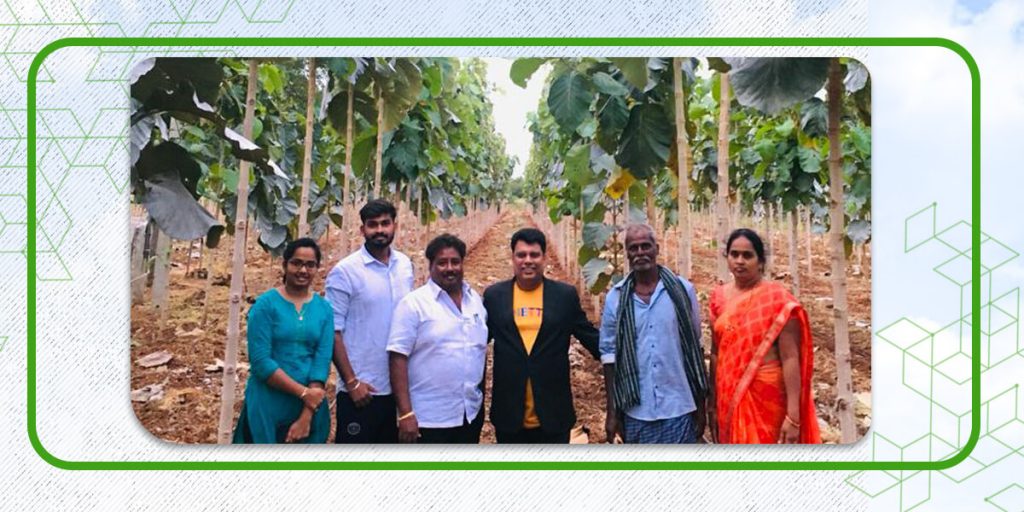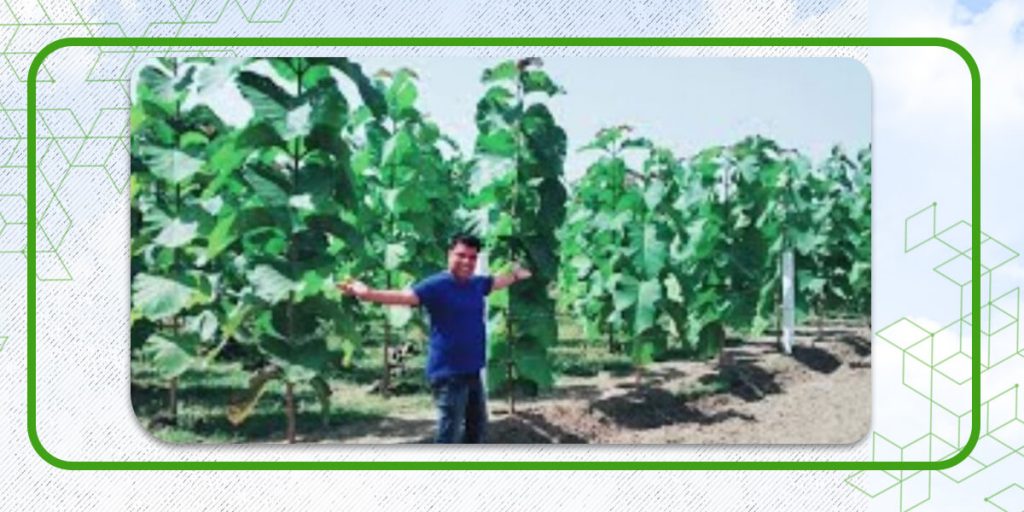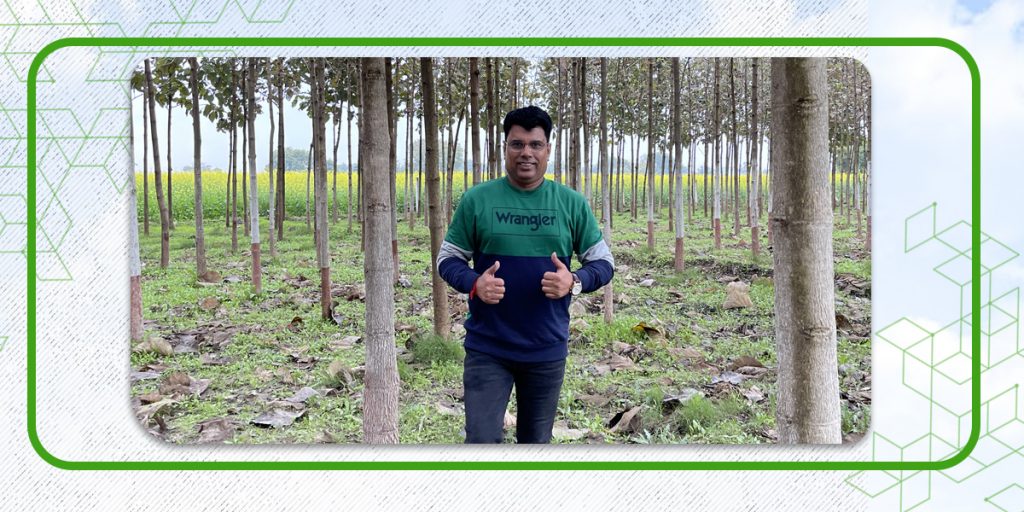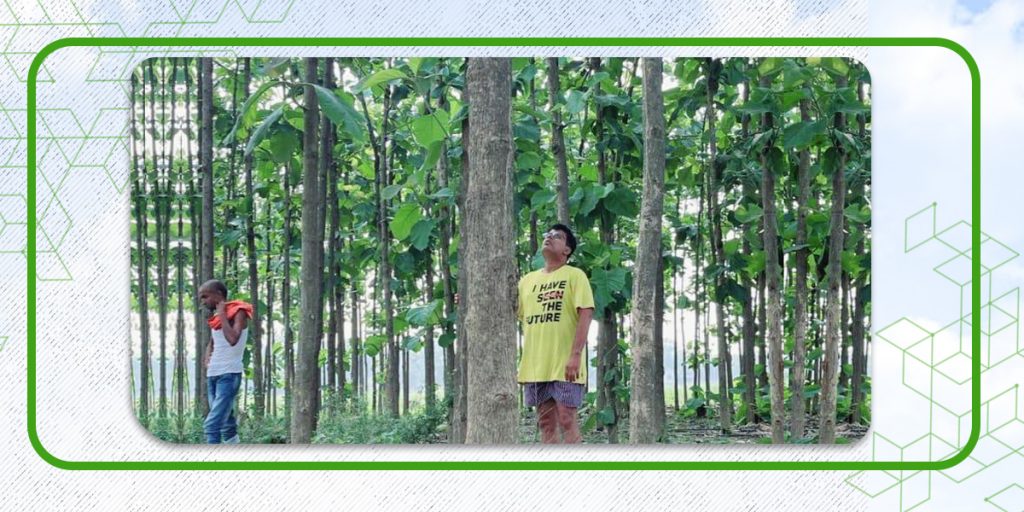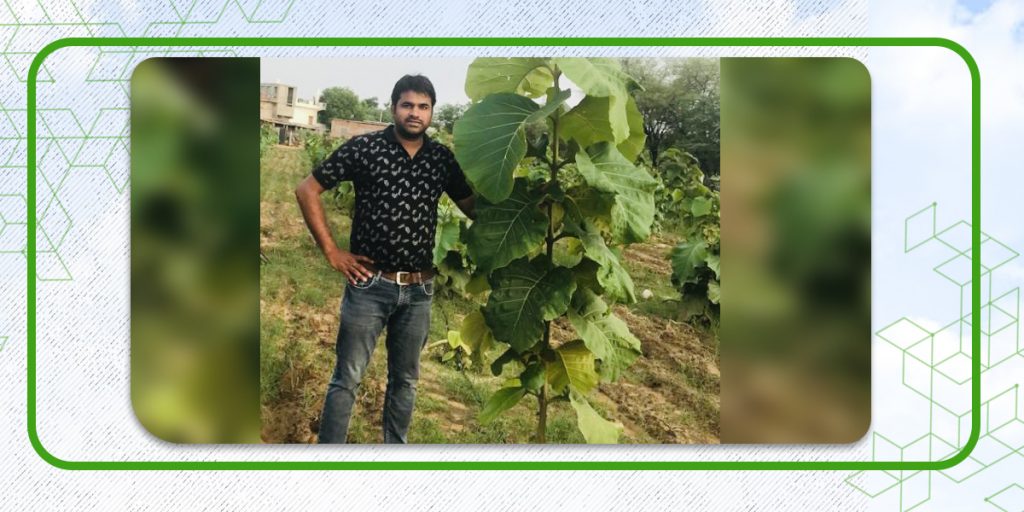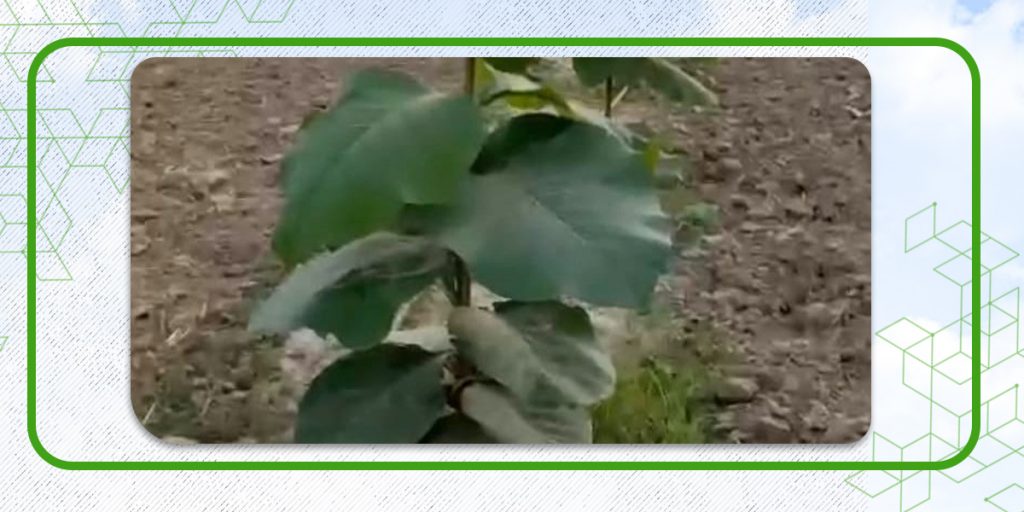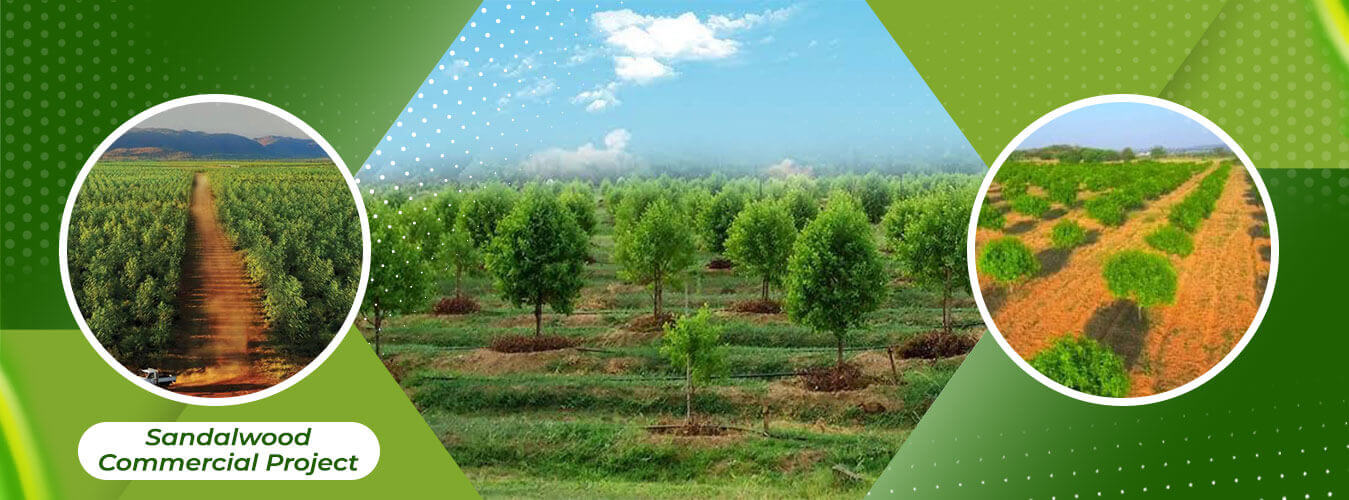
- Sandalwood
What are the type of Sandalwood?
The main type of Sandalwood are White Sandalwood & Red Sandalwood
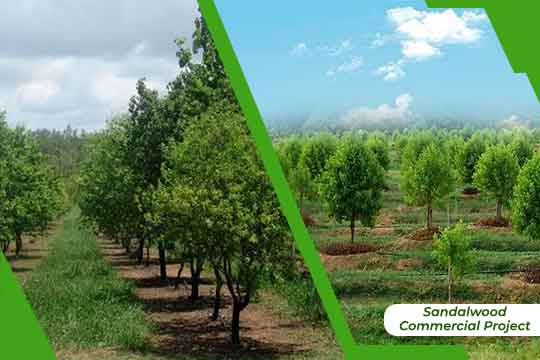
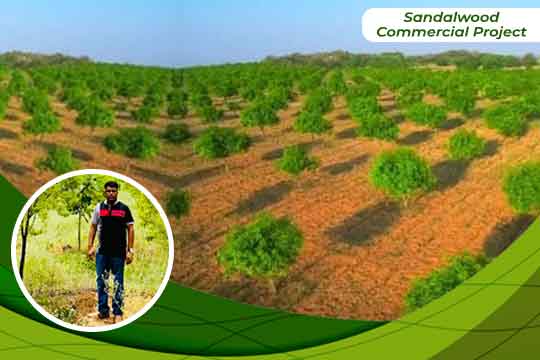
What are the scientific names of the type of Sandalwood?
Scientific name of White sandalwood is Santalum Album and of Red Sandalwood is Pterocarpus Santalinus
Sandalwood Farming Cost and Profit
Sandalwood Cultivation can fetch you approximately Rs. 2.5 to 3 lakhs starting from one tree as per previously recorded Government Auction Data. Let’s Understand the methods of Sandalwood farming from a broader prospect.
Government Guidelines on Sandalwood farming
The Government has banned the free trading of sandalwood. In such situations, only the government can buy it. According to the Constitutional amendments made in 2017, farmers can only cultivate sandalwood. But only the Government reserves the right to export.
To Begin With Sandalwood Cultivation
Farmers can earn billions of money by cultivating sandalwood. The speciality of sandalwood farming is that you can plant it throughout the field or if you are growing some other crop, it can be grown as an intercrop covering the edges of your designated land. Experts believe that farmers can earn up to Rs. 2.5 to 3 lakhs as per previously recorded Government Auction Data from sandalwood plantations. For example, If a farmer plans to cultivate sandalwood on one acre of land, he can easily plant about 600 trees and that can fetch him an income of approx Rs 18 Crore in a tenure of 15 to 20 years of investment.
Things to Keep in Mind While Cultivating Sandalwood?
The best part about Sandalwood plantation is that it is absolutely low maintenance and does not require much watering. Hence it is important to consider the fact that, they should not be planted in low-lying areas. It is also necessary to grow host plants alongside sandalwood plantations that support the growth of sandalwood because it is a parasitic plant which cannot survive alone.
Importance of Host Plant
Now the concern arises, why is it necessary to have a host plant? The justification is quite simple, the roots of the host plant meet the sandalwood roots and only then the sandalwood can grow rapidly. Farmers can plant host plants at a distance of 2 to 3 feet from sandalwood plants. There are many different types of Host plants but we recommend planting two high-quality developed pomegranate plants along with each sandalwood from a commercial point of view.
Commercial Earning from Host plant
For Example- If we plant 2 host plants for each sandalwood tree it means that we need to plant about 1200 pomegranate saplings on 1-acre land. After the ripening season If we can get 10 kgs of pomegranate from each plant, the total production from 1 acre is approximately 12000 Kg of Pomegranate. Hence, considering the market value of 1 kg pomegranate to be Rs 50, one can easily earn about 6 lakhs from 1 Acre of land after a year.
When Can Sandalwood Trees be planted?
Sandalwood trees can be planted throughout the year. But while planting it is important to keep in mind that the temperature of the location should be approx 30 degrees Celsius or more because Sandalwood requires hot and humid weather conditions to grow in full bloom. The advantage of this is that it can be planted during any season, and it will not spoil.
After planting the sandalwood trees, special care needs to be taken for cleanliness around it. Along with this, water accumulation should also not be encouraged around its roots. The core reason to avoid planting them in low-lying areas. To avoid the accumulation of water during the rainy season, keep its weir slightly above so that the accumulation of water does not affect the roots. Sandalwood plants need 2 to 3 litres of water a week.
According to experts, sandalwood trees get affected only when they are subjected to excess water. Hence, preventing excess water around its roots is primarily important.
How Much do the Plants Cost?
Good quality sandalwood plants can be available to farmers ranging from Rs 300 onwards. Apart from this, the cost of the host plant attached to it is around 90 to 125 rupees. Sandalwood is considered to be the most expensive wood. Its market price is around Rs.26,000 to 30,000 per kg. Let us suppose that one tree is about 100 kg in weight, it can easily be broken down to fetch 10 Kg of hardwood and 90 Kg is sapwood in about 15-20 years. Sapwood, on the other hand, can also be sold at Rs. 1000-1200 per kg, which equals to an annual turnover of approximately Rs 3 Lakh from 1 tree.
Use of Sandalwood
Sandalwood is mostly used in perfumes. Sandalwood is widely used in Ayurveda. It is also prepared in liquid and dust form for beauty and skincare. Sandalwood oil has a warm, woody odour and is commonly used as a fragrance in incense, cosmetics, perfumes, and soaps. It also is used as a flavour for foods and beverages. Sandalwood has been valued in carving because of its dense character. Sandalwood oil has been reported to have diuretic and urinary antiseptic properties, but clinical trial data are lacking. The oil has mainly been used as a fragrance enhancer. Sandalwood Oil has been a key component in the making of attar since ancient times.
Preparing Sandalwood Tree for Plantation
The sandalwood tree doesn’t require any external protection for the first 8 years because till that time it doesn’t acquire any fragrance. As soon as the ripening process of the wood begins, the fragrance starts evolving. During this time, it needs to be protected and to save it from animals, farmers make sure to siege the field.
Types of Sandalwood
There are two types of sandalwood – White & Red Sandalwood are the two types. White sandalwood is cultivated in the major parts of Northern India as it requires a 7.5 pH level of the soil. On the other hand, red sandalwood trees require soil with a pH level of 4.5 to 6.5. Hence, Red sandalwood is cultivated in Southern parts of India. Sandalwood trees cannot be grown in sandy and snowy regions.
Our process for Sandalwood Farming
Consultation
Soil Identification
Followed by the consultation process, is the Soil identification procedure initiated by our experts. We take samples of soil for testing in our specialized laboratory. The process or method of identifying the soil and distinguishing soil systematically based on the classification and criteria is done, after which the report is shared with the client via mail, by post, or by hand as discussed and decided earlier.
Soil Preparation & Planting
Followed by the soil identification, the clients are advised about land preparation for optimal tissue culture planting. The main way of soil preparation and planting is to add organic material each year and maintain it and make the soil prepared and ready for the fertilization process. After the professional takes up the projects relevant and required advice is passed on to the clients which includes – prepping the soil, brushing and clearing the area, and many more!
Maintenance Schedule
Followed by soil preparation and after plantations are done the team of experts offers a maintenance schedule that needs to be maintained. Training is offered to the farmers on the ground. The client can call our experts 24 * 7 in case there are any queries or in case they need guidance.
Harvest
The harvest period depends on the strategies that were put forward at the time of project commencement. The harvesting is done after completion of 12 years – 15 Years. as decided during the time of plantation. This can be dependent on client’s will or market demand since harvest time is mutually decided by VSAPL and the investor. In case, the market does not suit your need or taste, you can hold up to the plantation as long as you want. The harvesting schedule is also influenced by the maturity of the Hard Wood as per market expectations.
Project Citation
Complete Teak Commercial Project in Karnataka
Place – ChitraDurga + 10 more city Project Value – 100Cr Initiation date- 2021 Expected Harvest Date –2033-2036 Land Size –50 Acre
Read MoreComplete Teak Commercial Project in Maharastra
Place - Jalgaon Project Value - 30 cr Initiation date- 2021 Expected Harvest Date - 2034 Land Size - 15 HA
Read MoreComplete Teak Commercial Project in Uttar Pradesh
Place - Bulandshahr Project Value - 200 cr Initiation date- 2018 Expected Harvest Date - 2032 Land Size - 100 HA
Read MoreComplete Teak Commercial Project in Bihar
Place - Siwan Project Value - 100 cr Initiation date- 2016 Expected Harvest Date - 2029 Land Size - 50 HA
Read MoreComplete Teak Commercial Project in Rajasthan
Place - Alwar Project Value - 40 cr Initiation date- 2020 Expected Harvest Date - 2033 Land Size - 20 HA
Read MoreComplete Teak Commercial Project in Haryana
Place - Charkhi Dadri Project Value - 50 cr Initiation date- 2021 Expected Harvest Date - 2034 Land Size - 25 HA
Read More

